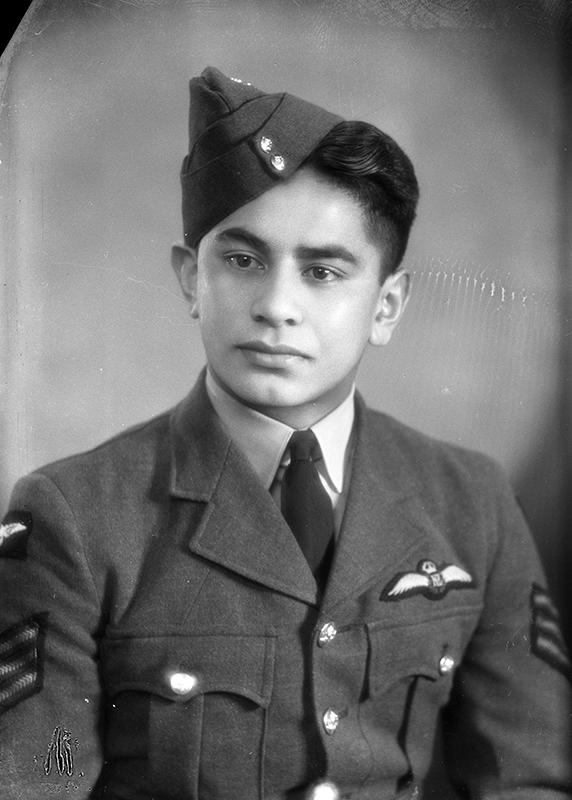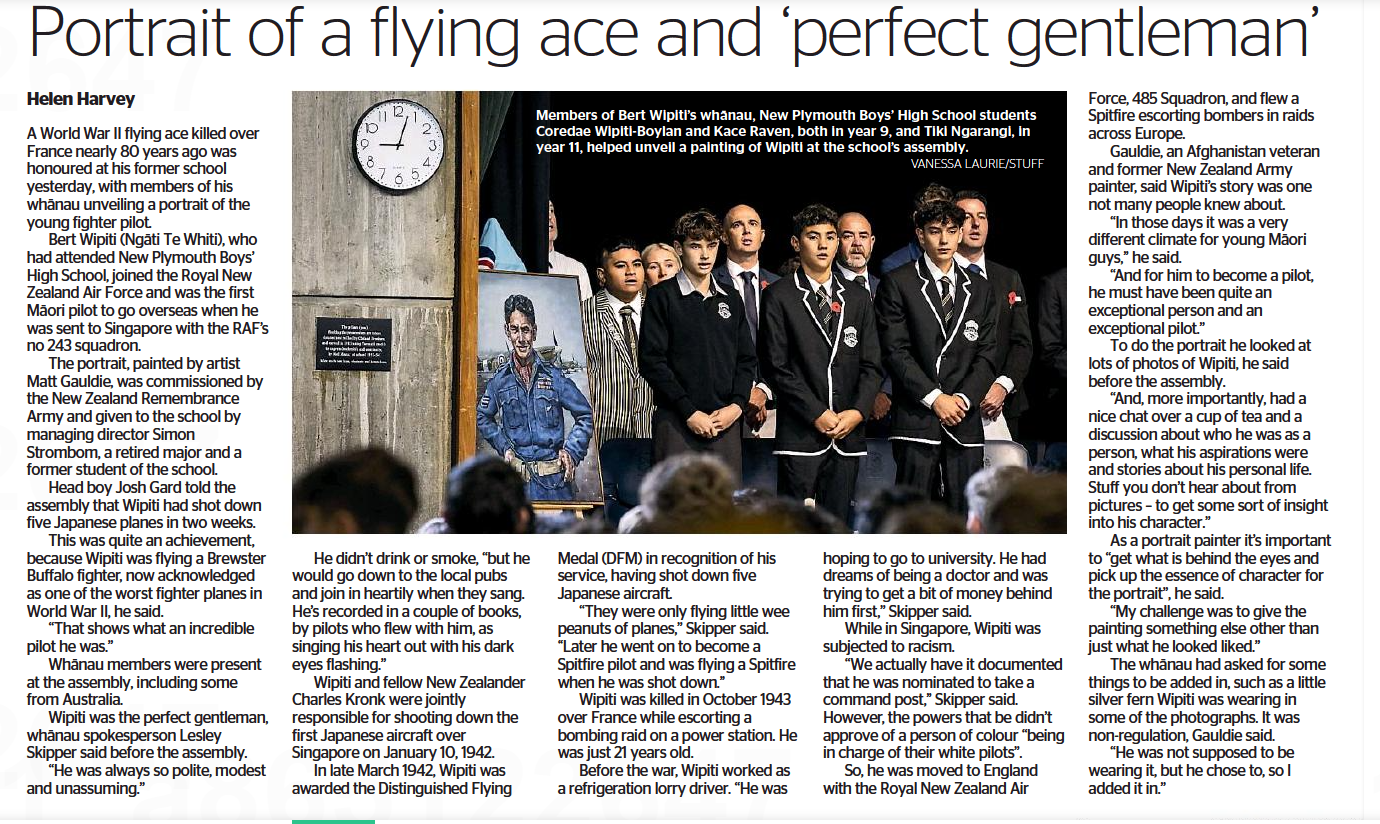



Though officially known as Airport Way, the strip of road in front of the hangers to the east of New Plymouth Airport is also unofficially marked as Wipiti Way in honour of a local lad who was one of the giants of Royal New Zealand Air Force (RNZAF) in World War Two.
He was the first Māori pilot to leave New Zealand for overseas duty and the first Royal Air Force (RAF) pilot to shoot down enemy aircraft over Singapore in 1942.
Bert Sam Wipiti was a New Plymouth boy from Mangorei Road who enlisted with the RNZAF at the age of 19 after leaving New Plymouth Boy’s High School. Seven months of training in New Zealand was seemingly all it took to install an exceptional skill in flying aircraft which was already on display by the time he was posted to 243 Squadron (RAF) in Singapore in July 1941.
It was over the skies of Singapore that Wipiti flew his first combat missions and he was awarded the DFM (Distinguished Flying Medal) in March 1942 for “displaying outstanding courage and determination whilst engaging large formations of enemy aircraft. He has set a fine example to us all”.
From Singapore Bert was sent to India for a time, before being posted to England in 1943 where he joined the 485 (RNZAF) Squadron after being trained in Spitfire fighter aircraft. He was involved in many flights over Europe gaining a reputation for his considerable skill and superb character.
Bert lost his life on 3 October 1943 at the age of 21. The details about how he died are unclear though it seems he was shot down by enemy aircraft over France. He has no known grave.
His name is commemorated on the Runnymede War Memorial in England, which recognises airmen and women who died in western Europe. This street name is another fitting memorial to a local boy who served his country in an outstanding way in World War Two.
This story was originally published in the Taranaki Daily News.
Please do not reproduce these images without permission from Puke Ariki.
Contact us for more information or you can order images online here.